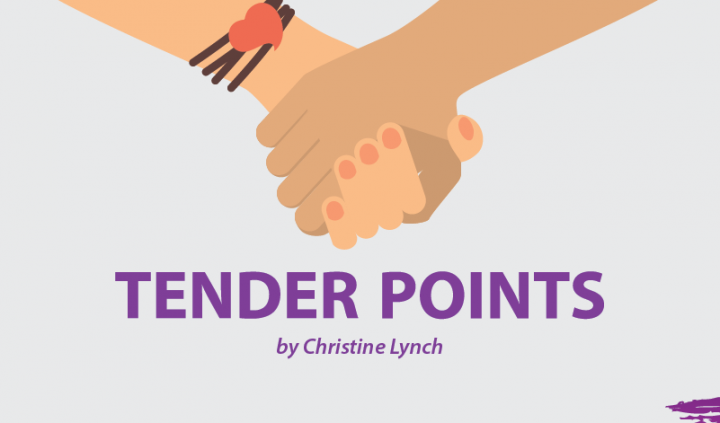I’m usually a very modest person, but today I get to toot my own horn. After a Herculean effort spanning nearly 10 years, my second book is finally for sale on Amazon. It’s actually the second edition of my first book which described the unique and sometimes humorous experiences of my fibromyalgia (FM) life. That first edition was called “Tender Points: A Fibromyalgia Memoir.” That title reflected the criteria used in the past for a fibromyalgia diagnosis. “Don’t have a history of at least three months of pain in all four quadrants of your body as well as tenderness in 11 out of 18 specific tender points? Sorry, you don’t have fibromyalgia.” Diagnosis was as cut and dried as that.
However, diagnosis wasn’t an issue for me. I’d had decades of total body pain, severe fatigue, cognitive issues, and 16 out of 18 tender points during any given exam. Others were not so fortunate. Despite years of experiencing many of the same symptoms I had, those with fewer than 11 tender points were denied a diagnosis. Of course, at the time there were no medications approved for the illness. So, whether you received a correct diagnosis or not, it made little difference to your treatment. However, it made a huge difference if you were unable to work and were applying for disability payments.
Shortly after the publication of my 2007 book, the criteria were reevaluated. Rheumatologists had noticed that many of their patients had similar pain histories, fatigue, and cognitive difficulties to those diagnosed with fibromyalgia. The patients suffered from additional symptoms common with FM, such as irritable bowel syndrome, temporomandibular joint disorder, and sensitivities to light, sound, and smell. It became apparent that some patients with FM were being misdiagnosed because of the tender points criteria. Over time the requirements for a diagnosis changed. It’s no longer made on “tender points” alone. Rather, it has expanded to “more than tender points.”
At the time that the diagnostic criteria were changing, research suggested that fibromyalgia was not a rheumatological disease at all (though the pain is felt in the muscles and joints), but a central nervous system disorder. With so many significant changes occurring, I began to question the content of the book I’d just written. A year later, I considered my book obsolete, so I began my research anew. My fibromyalgia symptoms (cognitive difficulties, pain, and depression) often interfered with the process. But new symptoms and new treatments gave me new experiences to include.
Here I am 10 years later, holding the first copy of my second edition with a new and more accurate title: “More than Tender Points: A Fibromyalgia Memoir Featuring Discussion Questions for FM Support Groups.”
I’ve updated the book’s information with the new knowledge I’ve acquired over the past decade, plus I’ve included discussion questions at the end of each chapter. I want patients to understand the disease more completely and to help support group leaders. Having held that position myself, I recall my struggle to present an interesting topic at each meeting. The topic must be relatable to all attendees and likely to encourage participation — and learning — from each other. I’m hoping that each of my chapters will serve that purpose.
***
Note: Fibromyalgia News Today is strictly a news and information website about the disease. It does not provide medical advice, diagnosis, or treatment. This content is not intended to be a substitute for professional medical advice, diagnosis, or treatment. Always seek the advice of your physician or other qualified health provider with any questions you may have regarding a medical condition. Never disregard professional medical advice or delay in seeking it because of something you have read on this website. The opinions expressed in this column are not those of Fibromyalgia News Today, or its parent company, BioNews Services, and are intended to spark discussion about issues pertaining to fibromyalgia.



The tender point test is meant to differentiate fibro from CFS, for example, as almost all other symptoms except this one overlap. Too many people who don’t meet the tender points criteria have been wrongly diagnosed with fibro. Up to a quarter of people with fibro don’t actually have fibro, or CFS or similar.